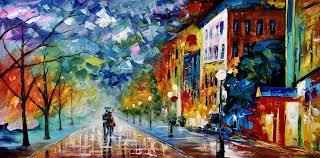The Transformative Power of Painting: An Exploration of Art
Painting, as one of the oldest forms of artistic expression, abstracte schilderijen transcends mere representation; it serves as a profound medium through which individuals convey emotions, narrate stories, and reflect societal changes. From the prehistoric cave paintings of Lascaux to contemporary abstract works, painting continues to evolve, embracing new techniques and technologies while remaining rooted in its rich history.
The Historical Journey of Painting
The history of painting dates back tens of thousands of years, with early humans using natural pigments to create images on cave walls. These artworks often depicted animals and hunting scenes, providing insight into the lives and beliefs of early societies. As civilizations advanced, so did painting techniques. The Egyptians utilized symbolic colors and hieroglyphics, while the Greeks and Romans explored realism and perspective.
The Renaissance marked a pivotal moment in the evolution of painting, characterized by a renewed interest in classical antiquity and humanism. Artists like Leonardo da Vinci, Michelangelo, and Raphael pushed the boundaries of technique and composition, experimenting with light, shadow, and human anatomy. This era also saw the rise of oil painting, which allowed for richer colors and greater detail.
In the 19th and 20th centuries, the art world witnessed a series of revolutionary movements. Impressionism challenged traditional representation, focusing on the effects of light and color rather than fine details. Abstract art, led by figures like Wassily Kandinsky and Piet Mondrian, moved away from representational forms altogether, emphasizing the emotional and spiritual aspects of painting.
Techniques and Styles
Painting encompasses a vast array of techniques and styles, each offering unique opportunities for expression. Some of the most prominent techniques include:
- Oil Painting: Known for its versatility and depth of color, oil paint allows artists to build layers and create textures, making it a favorite among many masters.
- Acrylic Painting: A more modern medium, acrylics dry quickly and can mimic both oil and watercolor effects, making them popular for both beginners and professionals.
- Watercolor: Characterized by its translucency, watercolor requires a delicate touch, often capturing the essence of a subject rather than its exact likeness.
- Fresco: An ancient technique where pigments are applied to wet plaster, allowing the colors to become an integral part of the wall surface.
- Mixed Media: Combining various materials and techniques, mixed media allows for innovative and experimental approaches to painting.
Each technique brings its own set of challenges and rewards, allowing artists to explore different dimensions of their creativity.
The Emotional and Societal Impact of Painting
Painting is not merely an aesthetic pursuit; it serves as a powerful tool for communication and reflection. Through color, form, and composition, artists can evoke a wide range of emotions, from joy to sorrow, anger to peace. This emotional resonance is what often draws viewers to a particular piece, allowing them to connect with the artist’s vision on a deeper level.
Moreover, painting can serve as a mirror to society, reflecting cultural, political, and social issues. Throughout history, artists have used their work to comment on war, poverty, identity, and injustice. For instance, Picasso’s “Guernica” is a poignant anti-war statement, while Frida Kahlo’s self-portraits delve into personal and collective identity struggles.
In contemporary times, painting continues to address pressing issues such as climate change, social justice, and mental health. Artists are increasingly using their platforms to advocate for change, creating works that inspire dialogue and action.
The Future of Painting
As we look to the future, painting is likely to continue its evolution, integrating new technologies such as digital painting and augmented reality. These advancements allow artists to explore uncharted territories, creating immersive experiences that challenge traditional notions of what painting can be.
Yet, despite these innovations, the fundamental nature of painting remains unchanged: it is a means of expression, a way to explore the human experience, and a powerful tool for connection. Whether through the brushstrokes of a master or the vibrant expressions of a contemporary artist, painting will continue to captivate and inspire generations to come.
Conclusion
Painting is a timeless art form that transcends cultural and temporal boundaries. Its ability to evoke emotions, provoke thought, and reflect societal changes underscores its significance in human history. As both a personal and collective endeavor, painting remains a vital component of our shared humanity, inviting us to explore, reflect, and connect in ways that words alone cannot.

